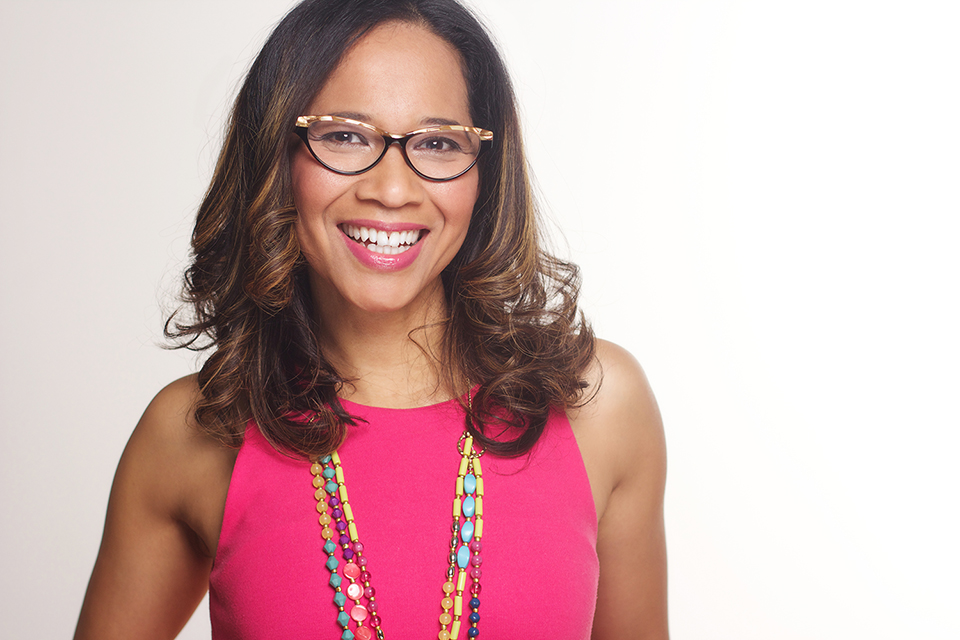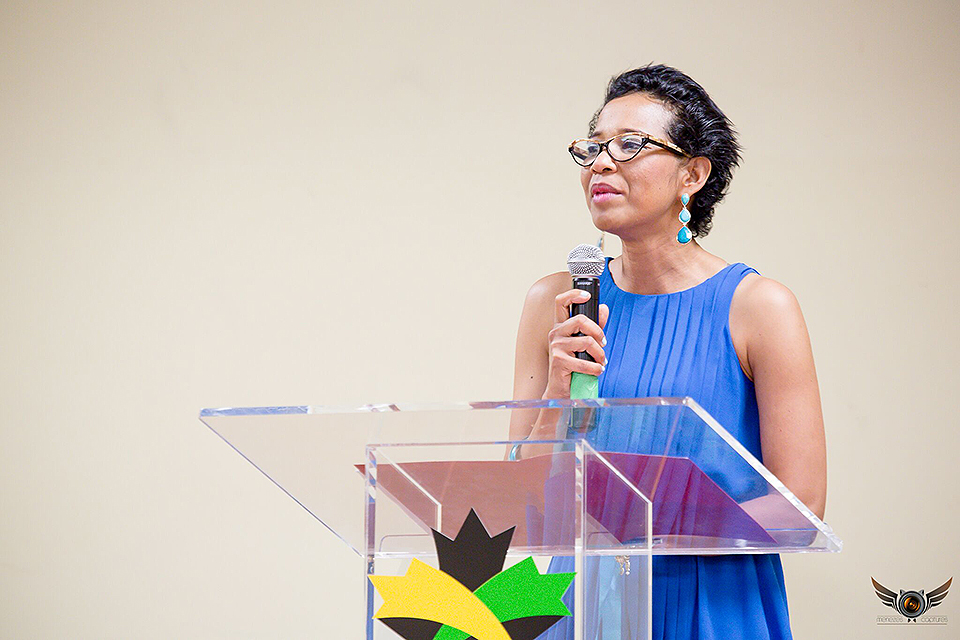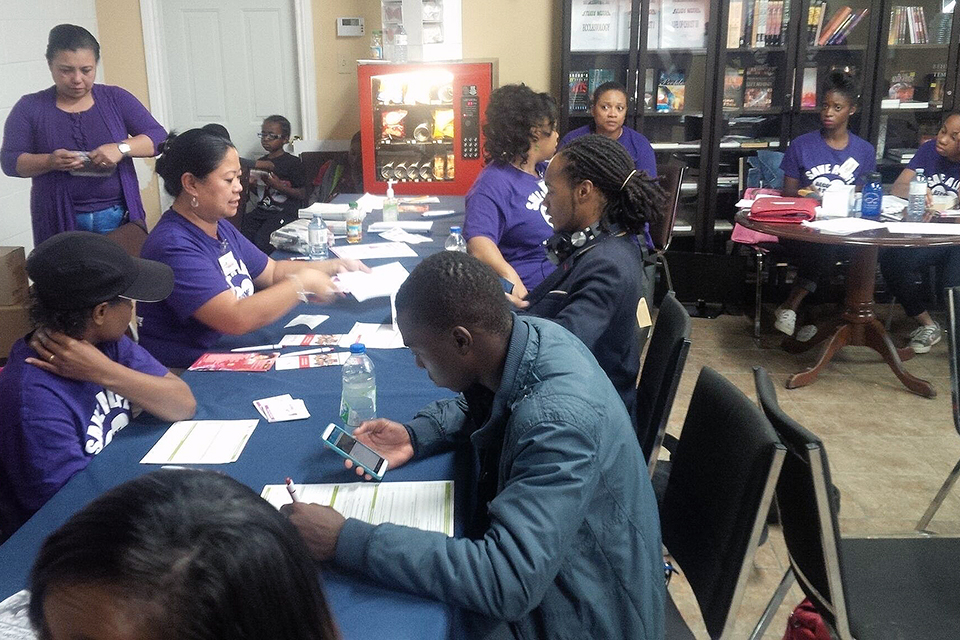The probability of a second chance at life can be calculated. Dorothy Vernon-Brown knows this all too well after being diagnosed with acute myeloid leukemia nearly three summers ago, a disease that causes bone marrow to function abnormally.
For someone suffering from leukemia or another life-threatening blood disease, a bone marrow or stem cell transplant is needed to survive. Their best chance is through a donor who carries similar genetic markers often found within their own ancestral group.
Canadian Blood Services recruits stem cell donors through its OneMatch registry. Today, its composition is 70 per cent Caucasian and 30 per cent racially diverse. The odds of finding a perfect match are one in 10,000. These odds become less favourable for patients of Caribbean and African descent, with the percentage of individuals representing the Black community on the registry being only 1.3 per cent.
“It’s arguably a Charter of Rights violation if somebody can’t get equal access to curative treatment,” states Dr. Kwame McKenzie, international expert on equitable health systems and chief executive officer of the Wellesley Institute, a non-profit research and policy organization based in Toronto.

While Vernon-Brown is on the road to recovery, her fight for more Black donors in the registry is far from over.
Regardless of ethnicity, many patients die while waiting for a donor, but Vernon-Brown refused to be another statistic. Mixed with Jamaican and Irish heritage, the Mississauga wife and mother of two was “completely taken aback” by the figures when she turned to the registry looking for an unrelated perfect match. Recognizing the urgent need for Black donors to be in the registry, she started a non-profit, Donor Drive 4 Dorothy (DD4D).
In general, fewer than 25 per cent of those in need can receive a transplant from someone in their immediate family. A perfectly matched, related donor is always preferred, but rare. Fortunately for Vernon-Brown, her sister was a half match — a case where a patient is matched with a family member whose tissues are only half identical — and would become her donor.
Dr. Mark Minden, Vernon-Brown’s oncologist at Princess Margaret Hospital, notes the increasing difficulty in finding an unrelated perfect match as races continue to intermix, and signals that the half match, also known as the haplo, is going to become very important. New research from John Hopkins University and Thomas Jefferson University has shown a haplo match to be just as effective as an unrelated perfect match.
While Vernon-Brown is on the road to recovery, her fight for more Black donors in the registry is far from over.
DD4D’s mission is to create awareness in Black communities across the Greater Toronto Area on adult stem cell donation and, in partnership with Canadian Blood Services, hold swab events to recruit young, Black males to the registry. Canadian Blood Services seeks men between the ages of 17 and 35 as donors because they produce the strongest stem cells, providing a better chance for the patient to recover, but both men and women are encouraged to register.
Over 500 donors have been recruited through DD4D since it was established in January 2014.

Donating stem cells is not a life-threatening or invasive procedure as many are led to believe.
“We definitely want to increase the number of donors [by] at least 1,000 to 1,500,” Vernon-Brown says of her campaign, which is organized by a close-knit team of family and friends. “We also want to get into all the Black associations through the churches, social associations, professional associations, to educate people around [the] dire need for people of ethnic heritage, because other ethnic groups are at risk too. Their numbers are just as dismal as the Black community,” she adds, referring to such groups as the Aboriginals (1.2 per cent), Hispanics (1 per cent) and Filipinos (0.7 per cent) as examples.
Like DD4D, OtherHalf – Chinese Stem Cell Initiative is a non-profit that actively campaigns in Vancouver to raise the level of awareness surrounding stem cell donation in the Chinese community and increase its number of donors.
Dr. Christopher Morgan, founder of the Black Health Alliance in Toronto, says that stigma can play a role, particularly within the Black community, which may account for the low number of registrants.
“[Stigma] can be a barrier in terms of accessing services or programs, and that may be part of the idea here. There may be misconceptions as well that also play a role,” he adds. “So, how does one become a donor? What are the risks associated with becoming a donor? How safe is it? . . . Not knowing the answers to that and not having the correct information to those types of [questions], will make persons less likely to participate in a program such as this.”
Donating stem cells is not a life-threatening or invasive procedure as many are led to believe. Preliminary steps involve a simple cheek swab to collect cell samples from the mouth. It may be years before someone is ever contacted to be a donor. If the person chooses to proceed after undergoing a health assessment, the process most commonly used is similar to giving blood, and includes being given a growth factor drug to stimulate the bone marrow to produce more stem cells and white blood cells.
“There’s been no evidence that giving [the growth factor drug] will cause any long-term side effects in people. So there’s some bone pain that may last a couple days, but that’s about it,” says Minden.
The overall pain and discomfort is said to be tolerable and donors return to their normal routine in days. The time commitment lasts about a week to improve the quality of someone’s life by years.

“We’re not immune to them — cancers and sickle cell and kidney disease and so on . . . some of those conditions affect our community at higher levels than other communities.”
Toronto Argonaut Matt Black has yet to receive a phone call. The defensive back joined OneMatch as a donor and campaign supporter after learning about it through his friend and rival, Ryan Hinds, who plays the same position for the Ottawa Redblacks. “It’s something that I guess you don’t want to get a call for because it means someone is sick, but at the same time it gives you an opportunity to potentially change and save someone’s life,” says Black.
When faced with the choice of donating, Black urges other young people to think about their own family and friends. “There is a lot of fear in the unknown, what’s involved, but . . . the vast majority of people, if not every person, [if asked], ‘If you had an opportunity to cure and to stop and to fight cancer, would you participate in that?’ I’d probably find it hard to find one single person that I know that would say ‘no.’”
It’s common for the level of awareness around stem cell donation to heighten when a family member or friend is in desperate need of a transplant. Outside of that though, the message falls flat.
“I think in any community, there is a diversity of attitudes in general,” says McKenzie. “Usually people are relatively agnostic about this sort of thing and you have to try to convince people or educate people about what actually happens, what impact it could make, and why they should be involved.”
“We’re not immune to them — cancers and sickle cell and kidney disease and so on. Those affect our [Black] communities,” says Morgan, who is also a chiropractor and director of Morgan Chiropractic & Wellness clinic. “As a matter of fact, some of those conditions affect our community at higher levels than other communities.”
All the more reason why Vernon-Brown plans to extend her outreach to her native Jamaica in the future. “Jamaica and the Caribbean do not have a registry and that’s what we want to do,” she says. “People of whatever nationality need to have a registry specific to them or their ethnicity that they can tap into really easily.”
Meanwhile, Vernon-Brown and her DD4D team are getting ready to campaign all over again this summer at Black churches and major festivals in Toronto like Carivibe, Jambana, Jerkfest and Soccerfest.
“People don’t need to die. People need a shot of a second chance. This is a perfect gift that costs nothing,” says Vernon-Brown. “You can help a family to deal with a crisis like this where they can come out on the other side. It’s just such a noble cause.”
Photos supplied courtesy of Dorothy Vernon-Brown and Tanya McKenzie of DD4D.




2 Comments
Great article Roxine! I hope that all readers will be educated and encouraged on how to be an ambassador for anyone especially Blacks battling blood cancers and illnesses. http://www.donordrive4dorothy lists the various ways on how to get involved – our purpose is to be earthly angels. Thank you.
Keep pressing on in your endeavours Dorothy. As we say in Jamaica , ‘one one coco full basket’. It only takes a spark to get the fire going. God bless you and your team. Looking forward to your visit..